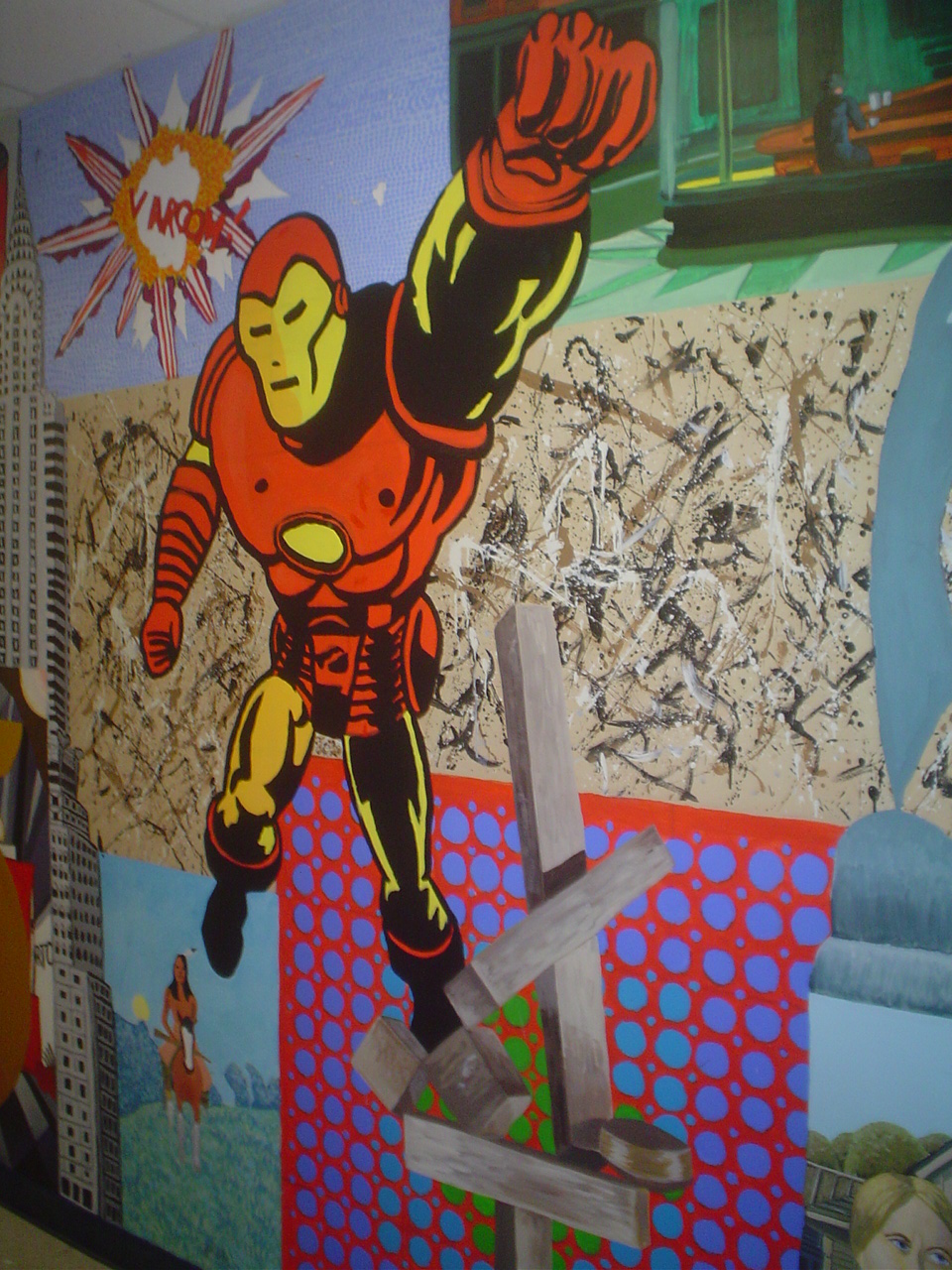
Let the quest begin!
A brief history of murals.
The following State Curriculum Standards can be addressed through this web quest:
9.1.12.K: Analyze and evaluate the use of traditional and contemporary technologies in furthering knowledge and understanding in the humanities.
9.1.12.A: Know and use the elements and principles of each art form to create works in the arts and humanities.
9.1.12.B: Recognize, know, use and demonstrate a variety of appropriate arts elements and principles to produce, review and revise original works in the arts.
9.1.12.C: Integrate and apply advanced vocabulary to the arts forms.
9.1.12.D: Demonstrate specific styles in combination through the production or performance of a unique work of art.
9.1.12.E: Delineate a unifying theme through the production of a work of art that reflects skills in media processes and techniques.
9.1.12.F: Analyze works of arts influenced by experiences or historical and cultural events through production, performance or exhibition.
9.1.12.H: Incorporate the effective and safe use of materials, equipment and tools into the production of works in the arts at work and performance spaces.
9.1.12.J: Analyze and evaluate the use of traditional and contemporary technologies for producing, performing and exhibiting works in the arts or the works of others.
9.2.12.A: Explain the historical, cultural and social context of an individual work in the arts.
9.2.12.B: Relate works in the arts chronologically to historical events (e.g., 10,000 B.C. to present).
9.2.12.C: Relate works in the arts to varying styles and genre and to the periods in which they were created.
9.2.12.D: Analyze a work of art from its historical and cultural perspective.
9.2.12.E: Analyze how historical events and culture impact forms, techniques and purposes of works in the arts.
9.2.12.F: Know and apply appropriate vocabulary used between social studies and the arts and humanities.
9.2.12.G: Relate works in the arts to geographic regions.
9.2.12.J: Identify, explain and analyze historical and cultural differences as they relate to works in the arts.
9.2.12.L: Identify, explain and analyze common themes, forms and techniques from works in the arts.
9.3.12.A: Explain and apply the critical examination processes of works in the arts and humanities.
9.3.12.B: Determine and apply criteria to a person’s work and works of others in the arts.
9.3.12.C: Apply systems of classification for interpreting works in the arts and forming a critical response.
9.3.12.D: Analyze and interpret works in the arts and humanities from different societies using culturally specific vocabulary of critical response.
9.3.12.G: Analyze works in the arts by referencing the judgments advanced by arts critics as well as one’s own analysis and critique.
Your web quest project will be divided into three parts. The first part of your project involves researching your topic. After each group of 5 students has chosen or been assigned a period from art history, the group will then conduct in-depth research on the web.
3) The Creative Process Some helpful links: Other resources(Books): 4)Evaluation a)The project participants will be graded as groups according to the following rubric: b)Your scores will be recorded onthe following chart, which will indicate the grade earned. 5)Conclusion
We hope everyone involved had fun with this project!
You are about to embark on a web quest to gain the knowledge you will use to create a dynamic, large-scale work of art. The final goal of your quest will be the creation of an original mural that reflects your knowledge of art history.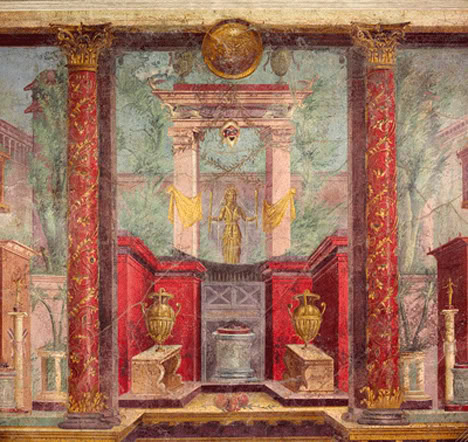
"But exactly what is a mural?" you may ask.Murals are large, permanent works of art that are painted or attached directly to a wall or ceiling. Murals have a long history that goes all the way back to Neolithic cave paintings such as those at Lascaux in France or Altamira in Spain, making them among the most ancient art forms produced by humans. In ancient times murals were painted by the Egyptians, Minoans, and Romans, some of which still survive. Murals were painted during the Renaissance by Raphael and Michelangelo, as well as many other great painters. In modern times the art of mural painting has been well represented by such artists as Thomas Hart Benton and Diego Rivera. Murals continue to be a popular art form in the present and in fact this web page was created in Philadelphia, a city which has been called “The Mural Capital of the World” due to the thousands of murals that adorn its walls, mostly to the credit of the city’s Mural Arts Program.
The web quest mural project will give you the opportunity to demonstrate your artistic skills in a way that will change the environment of your school for years to come. Can you gain the necessary skills and knowledge? Do you have the perseverance to take on a large and complex project and stick with it to the end? Do you dare to take…the mural creation web quest?
2)The Creative ChallengeIn your searching the web for your quest you should keep in mind questions such as:
The second part of your quest will involve deciding in what way you will present the material learned to the class and which group members will have which roles in doing so.At this point your group should agree on your method of presentation. Some possible methods of presentation include:
After the decision about choice of projects more research will be required. If your group chose the digital presentation some research and practice will be required to properly and effectively use the image manipulation programs and the available projection equipment. If a Promethean board is to be employed research will also be necessary, as well as scheduling some practice sessions with the instructor.Group members could perform the tasks of presenting to the class, designing the rough sketch, researching image manipulation techniques, researching electronic presentation techniques, or creating the digital virtual mural. One or more group members could perform any or all of these jobs.
If the choice of the group was for the actual mural research will be needed into materials, painting techniques, and enlarging and transferring techniques. It is probably desirable to paint a small scale painting or colored drawing for practice before approaching the wall. Group members could perform the tasks of mural design, preparing the wall surface, enlarging the design, painting the mural, or applying a final coat of varnish.One or more group members could perform any or all of these jobs.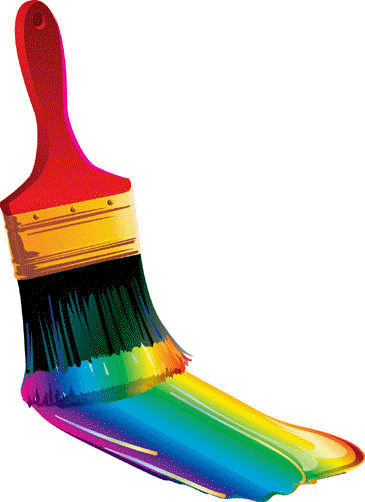
Some Steps to Follow
Mural painting steps:
Digital design presentation option steps:
Click here for information on the grid method.
Click here for PhotoShop tutorials.
Click here for links to art history resources on the web.
Painting Murals: Images, Ideas, and Techniques by Patricia Seligman
Adobe(R) Photoshop 7.0 Classroom in a Book by the Adobe Creative Team
History of Art by H. W. Janson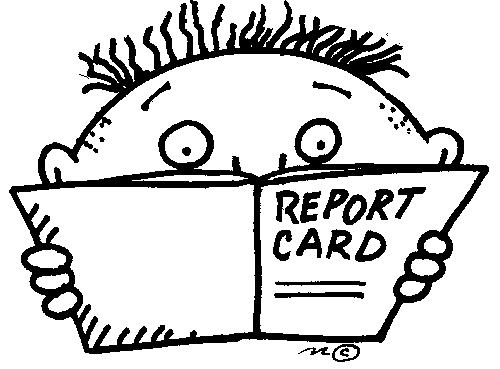
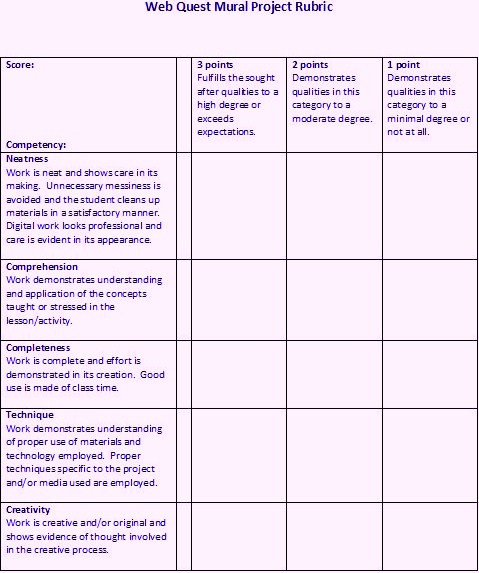
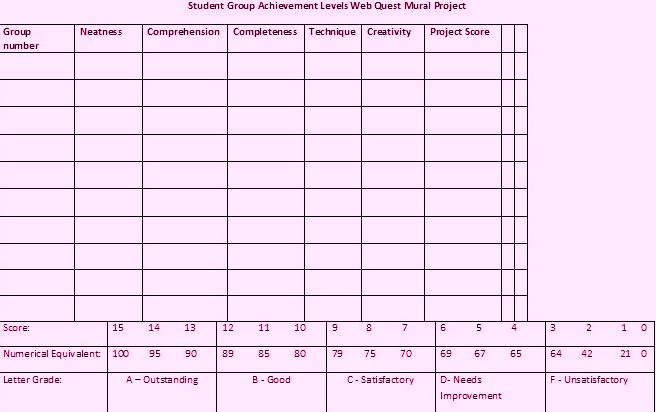
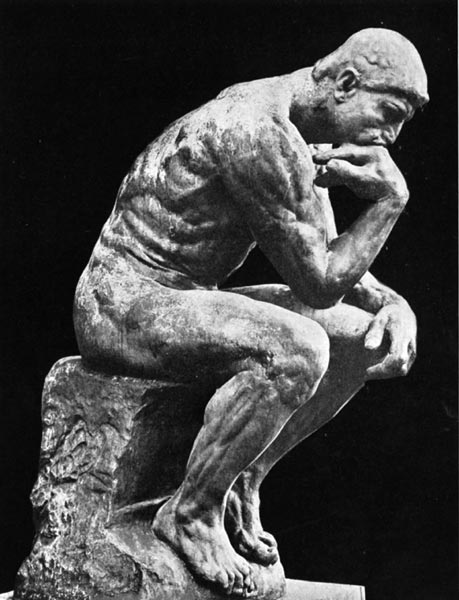
When you have completed your project you should consider the following questions: